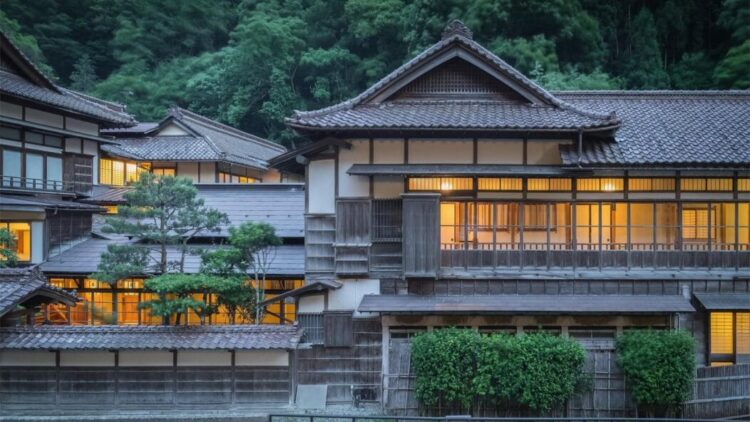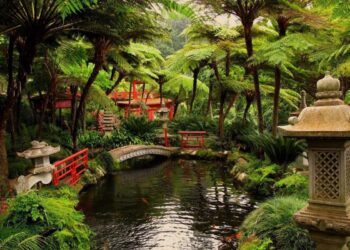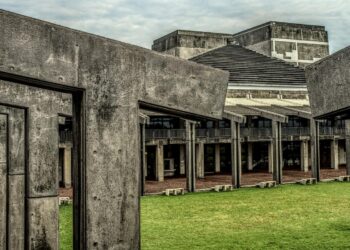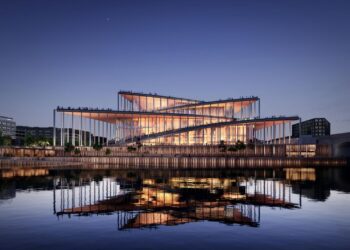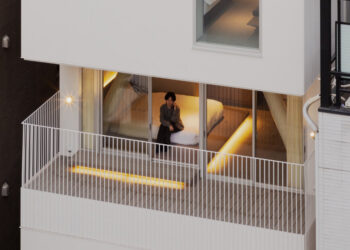The traditional Japanese inn, or Ryokan, is more than just a place to sleep; it is a cultural institution, an experience steeped in centuries of hospitality, meticulous service, and a deep connection to nature and tradition. However, in an era defined by rapid technological advancement, shifting travel habits, and intense global competition, the very future of these timeless sanctuaries is at a critical crossroads. The challenge for ryokans today is not just to survive, but to evolve, seamlessly blending their cherished heritage with modern sensibilities to remain relevant and continue their legacy. This is a story of timeless evolution, where tradition is not a static relic but a dynamic foundation for innovation.
The Enduring Legacy of Japanese Hospitality
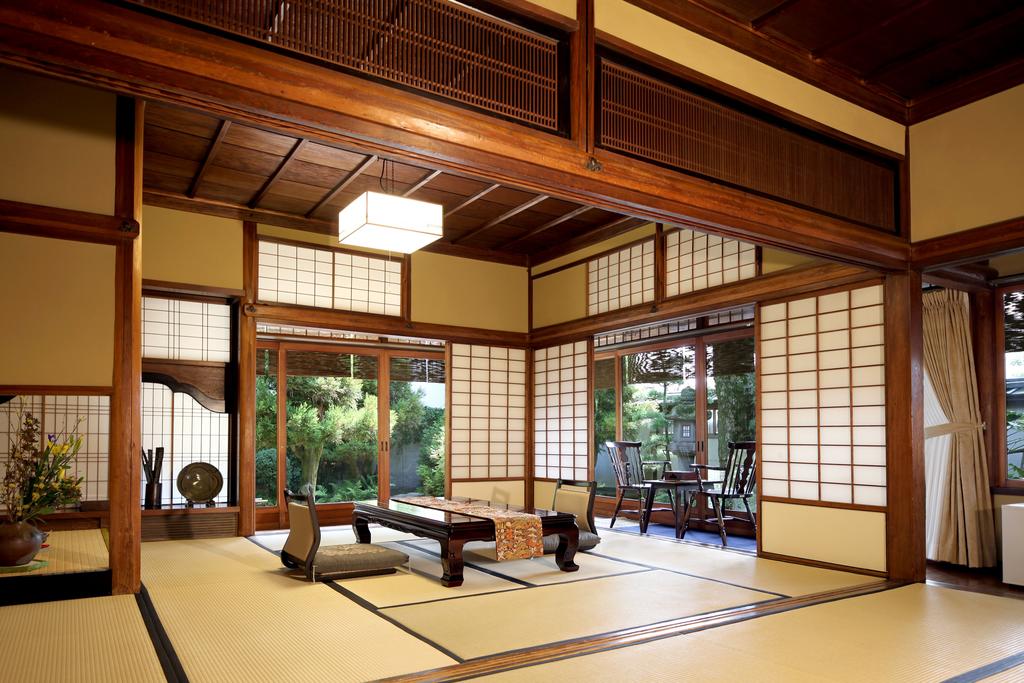
To understand the future of ryokans, one must first appreciate their profound past. The ryokan model, which emerged during the Edo period to serve travelers on Japan’s historic highways, perfected a unique form of hospitality known as omotenashi—a selfless, anticipatory, and meticulous form of service that places the guest’s needs at the absolute center of the experience.
A. The Quintessential Ryokan Experience
A stay in a traditional ryokan is a multi-sensory journey, meticulously crafted to offer a respite from the modern world. It is an experience that revolves around specific, cherished rituals.
- Architectural Harmony (Sukiya Style): The design is often minimalist and understated, featuring natural materials like wood, paper, and bamboo. The architecture is deliberately designed to foster a sense of tranquility and a deep connection to the surrounding landscape, often through large windows and a small private garden (tsubo-niwa).
- Tatami Rooms and Futon Beds: Guests stay in a traditional room with tatami mat floors, which are made of woven straw, and sleep on a futon that is laid out for them in the evening by a dedicated attendant. This simplicity encourages a grounding and peaceful sleep.
- Onsen (Hot Springs): Many ryokans, especially those in rural and mountainous areas, are famous for their onsen. Bathing in these natural hot springs is a core ritual of purification and relaxation, often with a gender-segregated communal bath or private baths available for an additional fee.
- Kaiseki Cuisine: The culinary experience is a highlight. A traditional multi-course dinner, known as kaiseki, is served, featuring seasonal, locally sourced ingredients prepared with exquisite artistry. It is a feast for both the eyes and the palate, often served in the guest’s room.
- Yukata and Attentive Service: Guests are provided with a yukata (a light cotton kimono), which is worn throughout their stay. A dedicated attendant (Nakai-san) is assigned to each room, providing discreet yet attentive service, from serving meals to laying out the futon.
B. The Ryokan at a Crossroads
For decades, this traditional model thrived. However, several forces are challenging its long-held practices and pushing the industry toward a moment of reckoning.
- Changing Demographics and Traveler Expectations: The global traveler of today, particularly younger generations (Gen Z and millennials), often seeks different experiences. They value convenience, personalization, digital connectivity, and unique, authentic experiences that can be shared on social media. The rigid rituals of a traditional ryokan can sometimes clash with these expectations.
- Technological Disruption: The ubiquity of smartphones and the expectation of seamless Wi-Fi connectivity present a challenge to the traditional ryokan’s focus on a “digital detox” experience. Technology is no longer an optional amenity; it is a fundamental expectation.
- Global Competition: The rise of boutique hotels, Airbnb, and other forms of accommodation offers travelers a wider range of choices, often at a lower price point and with greater flexibility, putting pressure on ryokans to justify their premium cost.
- Labor Shortages and Succession Crises: The meticulous service of a ryokan is incredibly labor-intensive. Japan’s aging population and a declining interest in traditional service roles have led to a shortage of young workers, making it difficult to maintain the high standards of omotenashi.
- Generational Divide in Management: Many ryokans have been family-owned for generations. The younger generation, often trained in business and global travel, sometimes faces a difficult choice between honoring their family’s tradition and modernizing the business to ensure its survival.
The Path to Blend Tradition with Innovation
The future of the ryokan is not about abandoning tradition, but about a skillful and thoughtful fusion of the old and the new. The most successful ryokans are already embracing this timeless evolution, using modern innovation to enhance, not erase, the core elements of their heritage.
A. Enhancing the Guest Experience with Technology
Instead of seeing technology as a threat to tranquility, forward-thinking ryokans are using it to enhance the guest experience and streamline operations.
- Seamless Digital Concierge:A. Pre-Arrival Communication: Using an app or messaging service to communicate with guests before their arrival, allowing them to pre-select their dinner time, choose their yukata size, or request a specific type of pillow, all while preserving the personal touch.B. In-Room Tablets: Providing an in-room tablet that offers a digital concierge service, allowing guests to book a private onsen, request room service, or get information about local attractions without needing to interrupt the peace and quiet of the room.
C. AI-Powered Translation: Integrating AI-powered translation services into these tablets or apps, breaking down language barriers and allowing international guests to communicate their needs with ease.
- Smart Room Features:A. Automated Lighting and Climate Control: Using smart sensors to adjust lighting, temperature, and ventilation, allowing guests to customize their environment for optimal comfort.B. Digital Tatami (Subtle Integration): Some innovators are exploring subtly integrated digital features, such as lighting that mimics the glow of a traditional lantern or audio systems that play nature sounds.
- High-Speed Wi-Fi (The Non-Negotiable): Providing robust, high-speed Wi-Fi throughout the property, not as a distraction, but as a necessary utility that allows guests to manage their external lives and share their unique experiences online. This is now a fundamental expectation.
B. Modernizing Operations and Preserving Omotenashi
Technology can be used to support the labor-intensive aspects of ryokan management, allowing staff to focus on the human element of omotenashi.
- Reservation and Property Management Systems:A. Cloud-Based Systems: Implementing modern, cloud-based property management systems that automate reservations, check-ins, and billing, reducing administrative burden for staff.B. Data-Driven Personalization: Using data from these systems to understand guest preferences and anticipate their needs, allowing the Nakai-san to offer a more personalized and attentive service.
- Robotics and Automation (Strategic Use):A. Behind-the-Scenes Efficiency: Using robotics or automation for non-customer-facing tasks like laundry, food preparation, or back-of-house logistics, which frees up staff to focus on direct guest interaction.B. The “Human” Touch: The goal is not to replace human staff but to support them, allowing them to spend more time on meaningful interactions, which is the essence of omotenashi.
- Sustainable Operations: Using technology to monitor energy consumption, reduce waste, and implement sustainable practices, aligning with the traditional ryokan’s respect for nature.
C. Creative Content and Marketing
Ryokans are leveraging digital media and modern storytelling to reach a new, global audience.
- Social Media Storytelling: Using platforms like Instagram and TikTok to tell the story of the ryokan, showcasing its beautiful architecture, exquisite kaiseki cuisine, and stunning natural setting. Visual content is key to capturing the attention of a younger audience.
- Virtual Tours: Offering 3D virtual tours of the ryokan and its surrounding landscape, allowing potential guests to experience the atmosphere before they book.
- Collaborations with Influencers: Partnering with travel influencers and content creators to share authentic, engaging stories about the ryokan experience, reaching a wider and more diverse audience.
- Online Booking Platforms: Ensuring a strong presence on major online travel agencies (OTAs) and a seamless, user-friendly booking experience on their own websites.
The New Ryokan Models
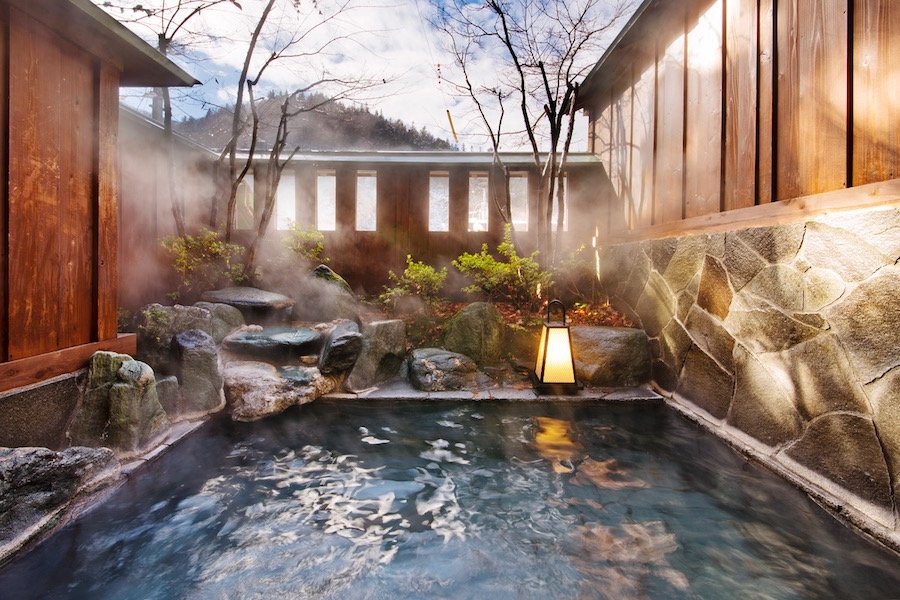
The future of ryokans is not a single path, but a spectrum of innovative models, each balancing tradition and modernity in unique ways.
A. The “Traditionalist” Model
- Core Philosophy: Unwavering commitment to the classic ryokan experience.
- Target Audience: Travelers seeking an authentic, immersive, and often “digital detox” experience, who value tradition above all else.
- Innovation Strategy: Subtle, behind-the-scenes modernization to improve efficiency (e.g., modern reservation systems) but with no compromise on the traditional guest-facing experience.
- Example: A small, family-run ryokan in a remote, scenic area that continues to offer the classic experience without significant technological integration for guests.
B. The “Modernist” Ryokan
- Core Philosophy: Blending the aesthetics and service of a ryokan with the comforts and technology of a luxury hotel.
- Target Audience: Younger, affluent travelers and international guests who appreciate Japanese aesthetics but expect modern amenities, privacy, and digital convenience.
- Innovation Strategy: Seamless integration of smart room technology, high-speed Wi-Fi, and a digital concierge, all wrapped in a minimalist, ryokan-inspired design.
- Example: A contemporary ryokan in an urban center or a popular tourist destination that offers traditional onsen and kaiseki, but with sleek, modern architecture, Western-style beds, and an iPad in every room.
C. The “Creative and Niche” Ryokan
- Core Philosophy: A focus on a specific, niche experience that reinterprets the ryokan tradition.
- Target Audience: Travelers with specific interests, such as art enthusiasts, foodies, or wellness seekers.
- Innovation Strategy: Partnering with local artists to create a unique, art-focused ryokan, or offering specialized wellness programs that combine traditional onsen with modern spa treatments.
- Example: A ryokan that is also a working farm, where guests can learn about sustainable agriculture, or one that partners with local chefs to offer cooking classes focused on seasonal kaiseki.
D. The “Hybrid” Model
- Core Philosophy: Combining a ryokan and a hotel into a single property.
- Target Audience: A broad range of travelers, from families who want a traditional experience to business travelers who need a more conventional hotel room.
- Innovation Strategy: Offering a variety of room types, from traditional tatami rooms to Western-style hotel rooms, and a range of dining options, from kaiseki to more modern cuisine.
- Example: A large, multi-building complex that has a traditional ryokan wing and a modern hotel wing, allowing guests to choose the experience that best suits their needs.
Challenges on the Road to Evolution
While the path forward is clear, ryokans must navigate a number of significant challenges on their journey of evolution.
A. Preserving Authenticity vs. Modernization
- Risk of “Dilution”: The biggest challenge is finding the right balance. Over-modernization can dilute the very authenticity that makes a ryokan unique, turning it into a generic “Japanese-themed” hotel.
- Generational Conflict: There can be conflict between older, traditional-minded owners and younger managers who want to modernize, leading to internal friction and a lack of a cohesive strategy.
- Cost of Innovation: Modernizing a historic property with new technology can be incredibly expensive and may not always yield a clear return on investment.
B. The Labor Crisis
- Attracting Young Talent: The labor-intensive nature of the ryokan model, with long hours and demanding service standards, can make it difficult to attract young, qualified workers.
- Training and Skill Transfer: The traditional skills of omotenashi are often learned through years of apprenticeship. Passing these skills to a new generation of workers is a major challenge.
- Language Barriers: As international tourism grows, ryokans need staff who can speak multiple languages, which can be a challenge, especially in rural areas.
C. Competition and Pricing Pressure
- Justifying Premium Cost: The high cost of a ryokan stay can be difficult to justify for travelers who are accustomed to the lower prices of hotels or alternative accommodations.
- Marketing and Visibility: Small, family-run ryokans often lack the marketing budget and digital expertise to compete with the large, global marketing campaigns of major hotel chains and booking platforms.
- Sustainability: Ryokans must find ways to market themselves as sustainable and eco-friendly to appeal to a growing number of environmentally conscious travelers.
Conclusion
The future of the Ryokan is a story of adaptation. It is a powerful example of a cultural institution facing the inexorable march of a changing world, choosing not to resist, but to evolve. By selectively and thoughtfully integrating technology to enhance their core values of hospitality and tradition, ryokans are not just preserving their past; they are ensuring their vibrant future.
From using AI to break down language barriers to leveraging social media to tell their unique stories, the most successful ryokans of tomorrow will be those that master the art of timeless evolution. They will prove that authentic, human-centric hospitality, when supported by modern tools and a clear vision, is a legacy that will endure for generations to come. The future ryokan will continue to be a sanctuary of peace, a beacon of tradition, and an enduring symbol of the timeless beauty of Japanese culture, masterfully adapted for a modern world.

